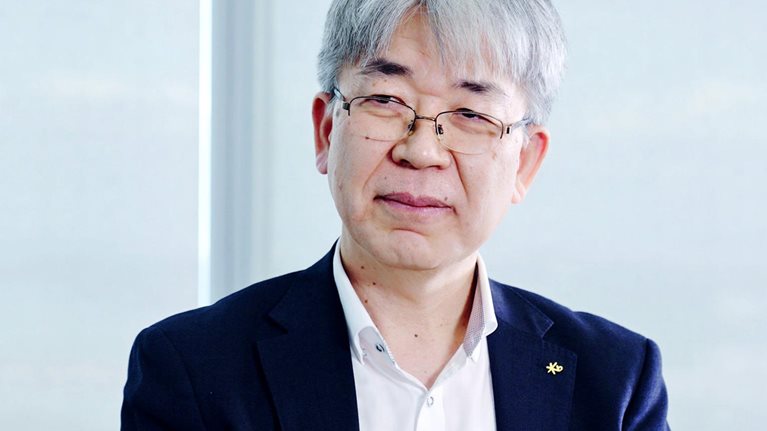It has been a decade since McKinsey published its last Korea report in 2013. Referring to the report, McKinsey likened South Korea’s situation to being a “frog in a pot of slowly boiling water”, where the temperature of the water kept rising. In this context, McKinsey has written a new report to examine South Korea’s current macroeconomic situation, assess the path it could take for its next S-curve of growth, and paint a picture of the country South Korea could aim to be in 2040.
Challenges surrounding South Korea
South Korea entered a low GDP growth rate of 3 percent in the 2010s, dropping to 2 percent in the 2020s, and losing its top-ten GDP status in 2022. Three aspects have contributed to this slowdown: labor, capital, and industry competitiveness.
Labor: South Korea is experiencing both a toppling of the demographic structure due to an aging population and a low birth rate, and a stagnant improvement of labor productivity.
Capital: Capital markets are challenged due to the low attractiveness of public markets and a lack of dynamism in private and venture investment markets. The financial depth of South Korea lags that of other advanced countries.
Industrial competitiveness: A new growth engine is lacking, fueled by heightened competition in South Korea’s main industries and the low productivity of small and medium-sized enterprises (SMEs). This will lead to sustained dependence on conglomerates.
South Korea could aim to become a top-seven economy with a GDP per capita of $70,000 by employing a new economic model that fosters a bold aspiration of 4 percent annual growth.
South Korea’s next S-curve through three pillars and eight actions
McKinsey has suggested three strategic pillars (Restructure, Shift, and Cultivate) and eight bold actions within these pillars to reconfigure South Korea’s economic growth model.
1. Restructure
As their competitive edge deteriorates, industries traditionally at the core of South Korea’s growth could reconsider their ways of business.
Action 1. Restructure at industry level: Industries such as refinery and petrochemicals that are facing structural challenges could consider asset rationalization, integration, or merging to solve overcapacity issues.
Action 2. Restructure business models: Industries could consider expanding from the previous model of a tight vertical integration of conglomerates and their suppliers to a more horizontal partnership based on collaboration between start-ups and large enterprises.
2. Shift
Each industry, and the economy as a whole, would need to shift beyond the limits of the existing drivers on which they rely for growth.
Action 3. Shift portfolios toward high value-added businesses: South Korea could take two approaches to grow beyond the limitations of its manufacturing-oriented economy. First, it could expand the proportion of knowledge-based, high value-added industries (for example, platform, software, or contents); and second, it could implement an extensive shift to high value-added products and services in traditional industries (such as shipbuilding and semiconductor).
Action 4. Shift to new businesses based on original technology: South Korea could actively seek to harness original technology for new businesses by, for example, supporting R&D investment and pushing collaboration between companies and academia.
Action 5. Shift to AI: Amid stagnant productivity improvements and the decline in the country’s population, industries could drastically uplift productivity through the use of AI technologies, including generative AI.
3. Cultivate
For meaningful growth, South Korea needs a system of regulation and support to create a healthy pipeline of companies—including SMEs, start-ups, and foreign companies—that will contribute to the GDP.
Action 6. Cultivate a foundation for innovation: South Korea could consider creating focused megaclusters rather than dispersed clusters around the country (at this stage, there are 18 bio clusters spread out throughout Korea). Further, it could set up a regulatory platform to allow companies to freely take advantage of cutting-edge technologies.
Action 7. Cultivate a virtuous cycle in the capital market: South Korea could diversify sources of capital by fostering corporate venture capital and foreign investments to provide a stable investment environment.
Action 8. Cultivate core talent: South Korea needs to grow professional talent, especially for core industries. This could be achieved by fostering domestic talent and attracting overseas talent by organizing collaboration with academia, creating incentives, and positioning Korea as a “place where professionals want to work.”
Future goals of South Korea by 2040
If South Korea successfully implements these eight bold actions, it could envision seven goals by 2040.
Creating five new companies with revenue over $100 billion, 20 new companies with revenue over $10 billion, and 100 new companies with revenue over $1 billion (compared to 2022 when there were three companies over $100 billion, 54 companies over $10 billion, and 418 companies over $1 billion). In 2040, there could be new globally leading companies from industries such as renewable energy, biopharmaceutical, AI, mobility, and semiconductor.
Small and medium-sized enterprises doubling their productivity: While SME productivity in South Korea is lagging, approximately 99 percent of domestic companies are SMEs and they employ around 80 percent of the workforce—South Korea could improve SME productivity to Germany’s or the United Kingdom’s levels.
Enjoying a 70 percent share of GDP from service industries: While service industries employ about 70 percent of South Korea’s workforce, in 2021 they only represented 57 percent of GDP, which is below the OECD average of 71 percent (Germany 63 percent, Japan 70 percent, and the United States 78 percent). There is room to improve this situation.
Doubling the financial depth: South Korea could aim to double its financial depth relative to GDP through 2040 (to United Kingdom levels) by cultivating a virtuous cycle in the capital market.
Developing at least two more global champion industries: In addition to extending the lead of current champion industries such as semiconductor and mobility, South Korea could focus on creating new champions in other industries—for example, renewable energy and biopharmaceuticals.
Establishing at least three top global clusters: South Korea could aim to create world-class megaclusters for industries such as biopharmaceuticals, IT, and semiconductor.
Cultivating 50,000 advanced AI professionals: South Korea could secure a leading position in industrial innovation by harnessing the productivity potential of AI. It needs to foster 50,000 more AI professionals to achieve this goal.
It’s time for South Korea to pull itself out of the boiling water. By adopting the restructure, shift, and cultivate pillars, the country could propel itself onto a new S-curve and become a top-seven economy by 2040.


